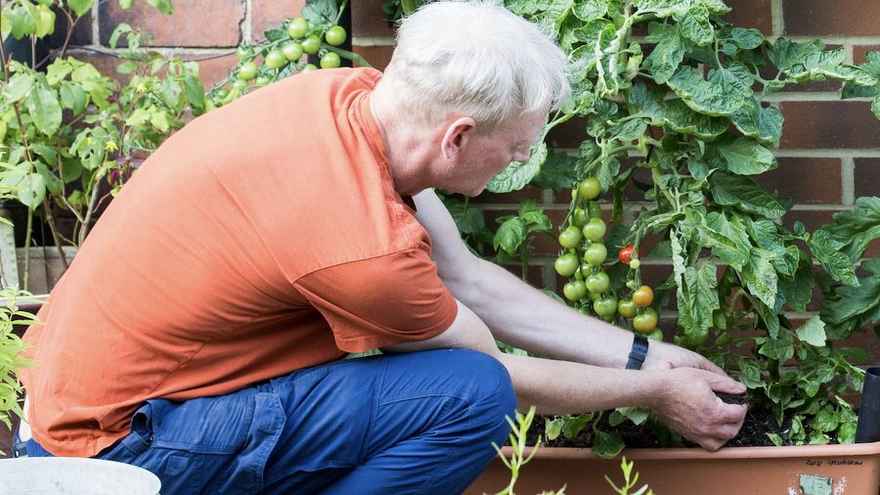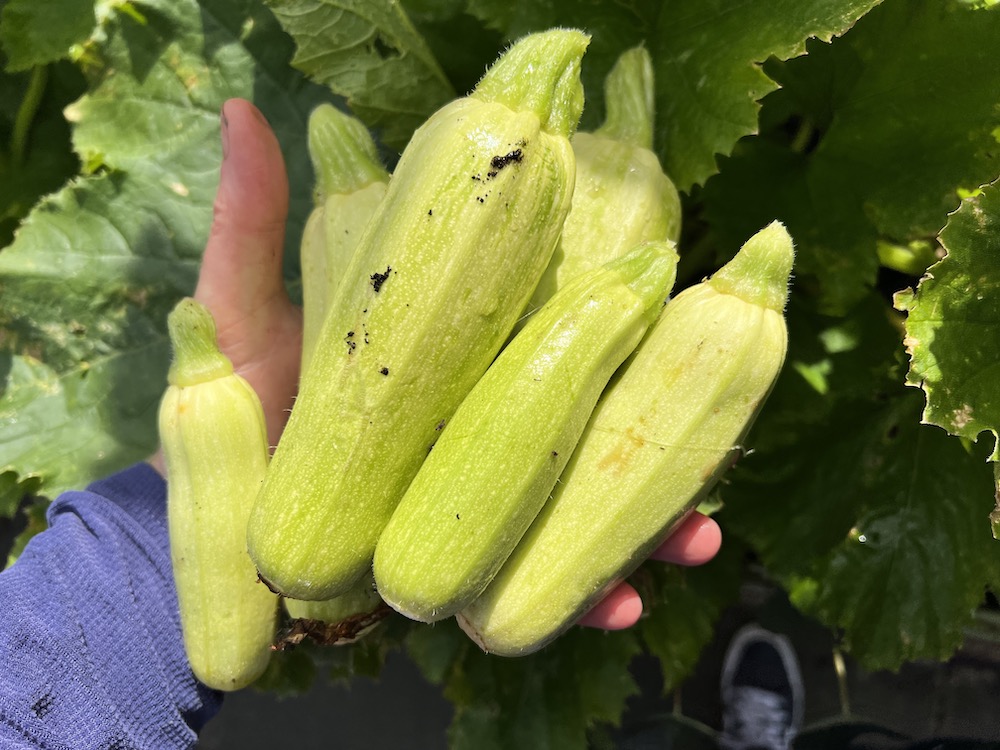Is 'No Dig' relevant to Container Gardening?

No Dig gardening is traditionally practised in the ground, often (but not always) in raised beds. Awareness of No Dig gardening has risen in recent years, thanks to the work of inspiring growers like Huw Richards, Charles Dowding and Stephanie Hafferty. But does it also work in containers? Here I share my thoughts and experience. I would love to hear yours in the comments below.
The benefits of No Dig
The biggest benefit of No Dig gardening in the ground - besides less work - is reduced disturbance of the microbial life in the soil. Disturbance, unfortunately, harms important fungal networks and damages bacteria populations. Plants need these fungi and bacteria to access their food, in the same way that we need bacteria in our stomachs to digest our food. By helping microbial life to flourish, No Dig helps plants to grow stronger and healthier. Another benefit is less weeds. As reduced disturbance brings less weed seeds to the surface where they can germinate.
Applying No Dig to Containers
Can we get these same benefits by practising No Dig in containers? Due to the fact that the volume of soil in a container is much, much smaller, our containers will usually have less microbiological diversity, and fewer extended fungal networks than in the ground. As a result, digging in containers will probably do less harm than digging in the ground. That said, it is beneficial in container gardening to mimic nature as much as possible. So it makes sense to try and encourage and support as much biological activity in our pots as we can. For example, I make and add worm compost to my containers. Worm compost is full of microbial life, and helps create a more biologically active potting mix that plants grow stronger and more vigorously in. My aim to nurture soil life in containers is also why I've been experimenting with No Dig container gardening. For example, I now cut my tomatoes and beans off at the base, leaving the roots to rot down in the soil. I then add a layer of worm compost to the top of the pot. I sow seeds or plant directly into this, disturbing the contents as little as possible. With hungrier plants like tomatoes, I may then add another mulch of worm compost to give them a boost in the middle of the season.
The potential benefits of No Dig in containers include:
- Less disturbance of the essential microbial life plants need.
- Leaving roots to rot down in soil, provides food for to help support microbial life in containers.
- Less disturbance helps maintain more air gaps. And roots left to rot should also help to create more air channels through the mix.
No Dig and Re-Using a Potting Mix each year
I also have a hunch that No Dig in containers makes it easier to re-use the same potting mix, year after year. This is because the structure of a potting mix tends to deteriorate with time. The consequence of this is that the number of air gaps in the mix decrease. (Plant roots and soil life both need to breathe). However, if we practise No Dig and don’t disturb the substrate, more air gaps (eg where roots rot down) are likely to remain. This should make it better for growing. This hunch is backed up by an observation. I have a pot of five year old coir and a pot of five year old wood chip compost that I grow tomatoes in using No Dig. Over time the structure of the coir has deteriorated far more than the wood chip. As tomatoes like a well aerated soil, this means that you’d probably guess they would do better in the wood chip. However, they seem to grow equally well in both. I can't be certain, but this might indicate that No Dig is helping the coir to retain more air gaps.
Results from my No Dig Trials
In general, my trials using No Dig (or, more accurately, digging as little as possible!) to grow tomatoes, courgettes / Zucchini and French beans in containers have all produced strong, healthy plants. I don't have conclusive evidence that it is a better approach, but intuitively it feels right and I will continue to do more. It isn't essential in container gardening - I've had lots of success without it - but I do think it is worth trying, particularly in larger containers.

A courgettes / zucchini harvest from one 50 litre / 10 gallon container using the No Dig technique this summer.

27 comments
Hi, I have been practicing no dig in 6×4 ×2 ft raised beds for 5yrs, each autumn i add about 2 inches of fresh compost ready for the new season, so far I have had good results with my tomatoes/Garlic/ onions and peas, I now grow my lettuce/ Parsley/Basildon etc in pots or troughs as the slugs were having a field day with them in the beds.
When doing no dig in buckets/containers, it helps to support the microbiome by cutting old crops off rather than pulling them out. That way the roots are left to support the soil and new sowings/plantings.
Thank you, Mark, for the enlightening discussion on no-dig gardening and its relevance to container gardening. The insights on soil health and plant growth are invaluable. For those in Dublin looking to integrate these practices into a beautifully designed garden, consider professional garden design services in Dublin. It can help create a functional and attractive garden space. Thanks again for the great advice!
I'm glad I stumbled on this post. For the last few years I've been growing some of my tomatoes in buckets - just the £1 orange builder's buckets from a certain DIY chain store. I've been treating them like a no dig bed, just adding top-up homemade compost at the start of the season, and the toms have done well. I cut them off at base at the end of the summer/autumn and leave the roots be. Also allow any weed seeds in the compost to grow as long at they don't outcompete the tomato, just chop and drop them back into the bucker. Been growing garlic in them over winter too. Very surprised that I don't need a whole container of fresh compost every year, but it works well.
Thanks Mark, useful advice. I have huge containers about 5 feet by 3 feet but on concrete so they're still essentially pots. They were new so it's been difficult sourcing enough compost to fill them all, and for logistical reasons I'm practising no dig.
Early days yet but moderately good results, trying to top them up with my own imperfect compost in autumn then covering with grass clippings and then cardboard, over wintering and letting the whole lot rot. I initially used some shop bought compost but that was poor.
The cardboard is a revelation for one thing it protects the compost, provides shelter for large communities of worms and for another the slugs will cling on to the underside and I can pick them off. By conscientiously doing this January onwards I got rid of most of them by about April/ May last year, and amazingly didn’t have much of a slug problem.
Leave a comment